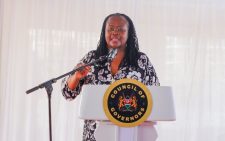Queries over refugee integration plan

A month after the government launched the Shirika Plan, an initiative aimed at integrating refugees among host communities, queries have been raised about its sustainability.
Shirika Plan has faced criticism from refugees, host communities, and civil society organisations.
Stakeholders have raised concerns over a lack of meaningful consultation with refugees and community leaders, unclear implementation guidelines, limited administrative capacity, and fears of increased pressure on already-strained and underfunded services.
“Questions around transparency, inclusivity, and long-term sustainability continue to cast doubt on the plan’s ability to deliver on its ambitious goals,” US Committee for Refugees and Immigrants (USCRI) said in a statement.
The Shirika Plan, USCRI noted, will require a review and revision of other existing policies and procedures on refugees to align them with its goals and objectives.
Two main counties, Turkana and Garissa that host are predominantly within arid regions and have in recent years, been hit by severe drought and floods as the world grapples with climate change.
The regions are marginalised, lacking essential social services, infrastructure and energy, while the residents are mainly pastoralists, who also practice small-scale subsistence farming when the weather is favourable for growing crops.
USCRI emphasised that the success of the Shirika Plan depends on the engagement of various stakeholders and will require strong coordination so as not to duplicate or undermine efforts. “Channels of communication must be enhanced to ensure timely, effective, and accurate updates and action,” the agency said.
In a bid to address the stalemate in the implementation of the Plan, USCRI recommended a comprehensive review of relevant national and county-level laws—including those related to land use, employment rights, and refugee status—to enable sustainable integration.
The government estimated that it will cost $943 million (Sh122.3 billion) to implement the Shirika Plan, for a period of 11 years from 2025 to 2036.
However, with the downturn in humanitarian aid globally, ongoing hostilities in the region, and a slowing political will to support refugees, USCRI noted that the government must diversify the funding base, including going beyond traditional humanitarian donors and strengthening public-private partnerships .
Governors from counties hosting refugees were the first to express concern over the implementation of Shirika Plan programme, citing among other reasons, lack of awareness among host communities, strained resources, environmental degradation and security implications.
On March 28, 2025 when the Plan was launch at State House by President William Ruto, Turkana Governor Jeremiah Lomorukai and his Garissa counterpart Nathif Jama called for caution when rolling out the programme, adding that the fears of the locals must be addressed beforehand.
“There is an element of dissatisfaction on the ground, I think when we go ahead to implement the programme, there is for us to continue sensitising the people, Lomorukai said.
Jama asked the government to clearly show how the host communities will be compensated.
Kenya National Bureau of Statistics reported in the 2025 Economic Survey that the total number of refugees and asylum seekers was 829,211 as of January 31, 2025.
The total number comprised 608,668 refugees and 220,543 asylum seekers.
About nine in every 10 refugees and asylum seekers live in camps, with Dadaab being the highly populated camp with 419,155 followed by Kakuma with 299,884.
Only 13 per cent of refugees and asylum seekers live in urban areas.











